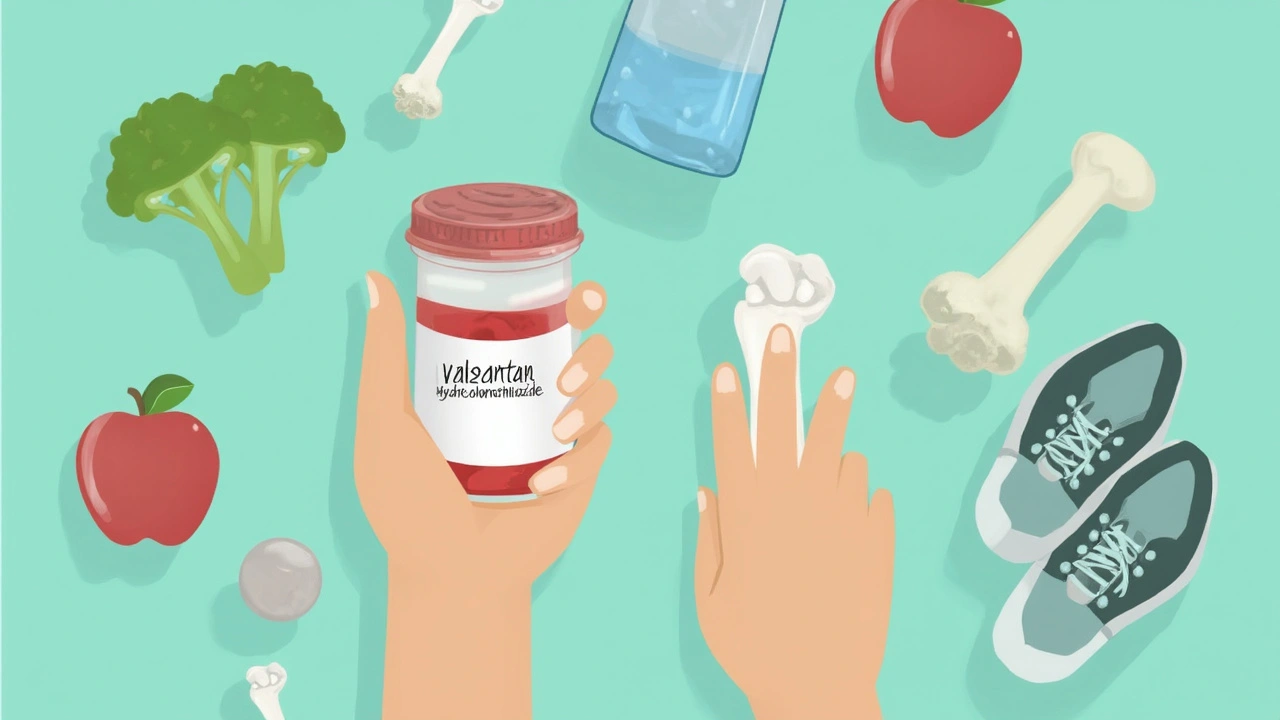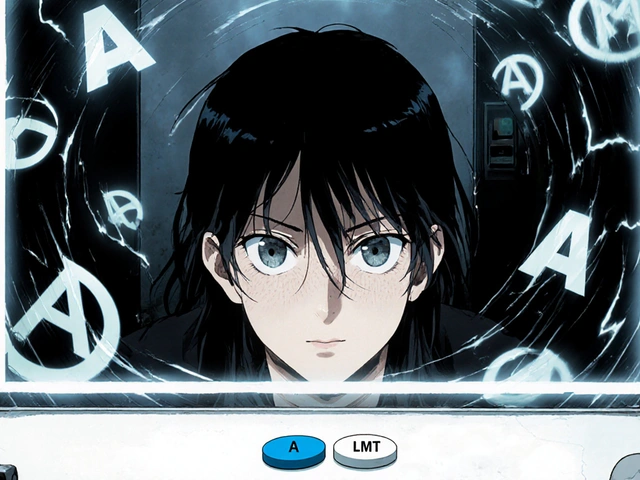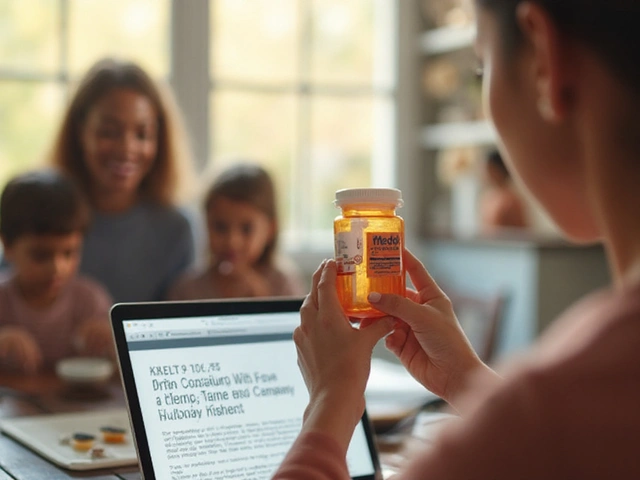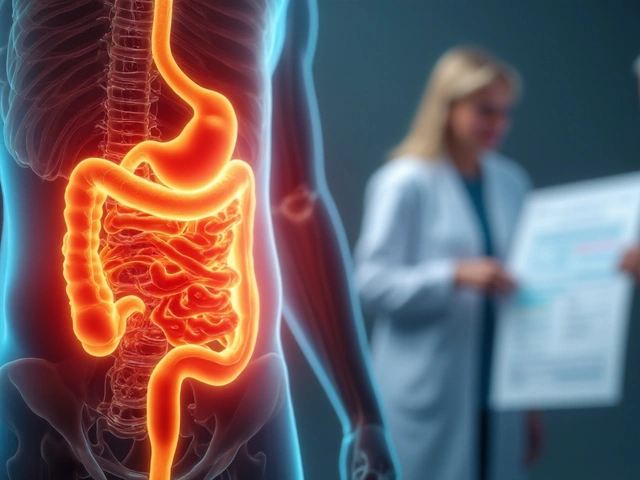If you think high blood pressure and brittle bones don’t collide, you’re in for a surprise. Plenty of folks rely on valsartan-hydrochlorothiazide to keep their BP in check, but hardly anyone asks what those pills might do to their bones. Osteoporosis sneaks up on millions every year while they’re busy fighting other health battles. So, does this popular combo set up your skeleton for a shakedown? Or could it quietly lend a hand protecting your frame, even while it controls your heart health?
What Is Valsartan-Hydrochlorothiazide and Why Do Doctors Prescribe It?
Valsartan-hydrochlorothiazide is a mouthful, sure, but it’s also a powerhouse combo against high blood pressure. Valsartan’s an angiotensin II receptor blocker (ARB), and hydrochlorothiazide’s a thiazide diuretic—two separate approaches squeezed into one pill. Valsartan blocks certain chemicals that tighten blood vessels, helping blood flow easier. Hydrochlorothiazide (let’s just call it HCTZ for now) makes your kidneys pull extra salt and water from your blood, lowering fluid and pressure.
Not only does this dynamic duo work together to bring stubborn numbers down, it’s especially handy for folks whose blood pressure doesn’t flinch with just one drug. The American Heart Association says almost half of adults in the U.S. have high blood pressure, and combos like these are on the front lines. These pills pile up on medicine cabinets across the world, quietly chipping away at cardiac events.
But while these pills win big on blood pressure, they also tinker with other things—like electrolytes, calcium, uric acid, and even the way your kidneys tick. That spells out possible ripple effects beyond the numbers you jot in your BP log. And here’s where bone health enters the picture.
Thiazide Diuretics and Your Bones: The Hidden Connection
Most folks associate bone loss with age, menopause, or maybe a calcium-light diet. Looks like your water pill might belong on the list, too—but not in the way you might expect. Thiazide diuretics, including HCTZ, have a bit of a complex relationship with bones. Here’s why: these drugs actually help your body keep calcium inside, instead of letting it pee out like some other diuretics do.
For years, bone docs have whispered (sometimes loudly) about thiazides being “bone friendly.” A real study out of the Journal of Clinical Endocrinology & Metabolism once found that adults taking thiazides ended up with denser bones after a couple years compared to their neighbors on different meds. How? HCTZ signals your kidneys not to toss so much calcium. More calcium in means less calcium leaching out of your bones. If you’re a postmenopausal woman—the group osteoporosis stalks the most—this is a pretty big deal.
The National Osteoporosis Foundation has even pointed out thiazides for this unique effect. But before you pop the champagne, remember that bone density doesn’t always mean fewer real-world fractures. Some large trials saw a slight dip in hip fracture risk, while others found the numbers less impressive. But if your doc prescribes you valsartan-HCTZ for high blood pressure, the chance that the thiazide might quietly support your skeleton isn’t nothing.
People get excited by quick fixes, but thiazides work best for bone health when you combine them with bone-smart habits. Get enough vitamin D and calcium. Stay physically active. And if you’re worried about falls, practice balance training. Even if HCTZ lends a hand, skipping the basics slims your odds.

Can Valsartan-Hydrochlorothiazide Increase Osteoporosis Risk?
Now for the other side of the coin: could this BP pill make osteoporosis worse? The tough part here is valsartan itself hasn’t shown any particular harm—or benefit—when it comes to your bones in major studies. It’s the HCTZ part that grabs more attention. Some blood pressure meds, especially loop diuretics like furosemide, do the opposite of thiazides: they make the body leak calcium and raise the odds of bone loss. Thiazides, as we’ve already hit on, mostly hang onto calcium.
So—if you’re on valsartan-HCTZ, the medication shouldn’t be sabotaging your skeleton. But that's not a hall pass. Your bone health is more than one pill deep. Age, hormone levels, weight, family history, smoking, drinking, race—these all play heavy roles in the osteoporosis equation. What you eat and how often you move speak louder than what’s inside your prescription bottle.
Still, you want to keep an eye out for some curveballs. HCTZ can mess with sodium and potassium balance, which sometimes brings on muscle cramps or weakness. If your legs feel like noodles, your risk of falling ticks up—a good way to end up with a broken hip, no matter how calcium-rich your bones might seem. Anyone experiencing low potassium or magnesium needs a check-up and, often, a tweak in their plan. The best results usually come from juggling the right medicine at the right dose, staying on top of labs, and refusing to ignore weird side effects.
As Harvard Health puts it:
“It’s not just about medication—regular weight-bearing exercise, a bone-healthy diet, and avoiding falls can make a profound difference in your risk for osteoporosis and fractures, even while managing other chronic health issues.”Scientists are still mapping out exactly how much credit thiazides deserve compared to lifestyle choices, but skipping your daily walk or gobbling too much salt will almost always undo whatever good HCTZ could offer your bones.
One last twist: too much HCTZ for too long can sometimes push calcium levels in your blood too high, especially if you’re already taking lots of calcium. Very rarely, folks can end up with kidney stones because of it. It’s not a reason to ditch the drug on your own, just a reminder why your doc might say no to megadoses.
Smart Tips to Maximize Bone Health on Blood Pressure Medicine
Plain and simple—nobody wants to trade a stroke for a fractured hip. Here’s how to tilt the balance further in your favor if you’re on valsartan-hydrochlorothiazide:
- Get Moving: Lifting weights, walking, or even dancing gives your bones and muscles a reason to stay strong.
- Eat Bone-Boosting Foods: Dairy, leafy greens, tofu, beans, and nuts help supply calcium and magnesium. Fatty fish and eggs help with vitamin D.
- Stay on Top of Labs: Ask for regular bloodwork. Low potassium and high calcium can hint that your meds need some fine-tuning.
- Avoid Too Much Salt: Thiazides make you pee out sodium, but if you eat a salty diet, it still strains your system—not great for blood pressure or bones.
- Go Easy on Booze and Cigarettes: These strip your bones and cripple your progress.
- Watch for Side Effects: Muscle cramps, weakness, unexplained aches—talk to your doctor right away.
- Add Balance and Flexibility Workouts: Yoga, tai chi, or even simple standing leg exercises cut down your chances of falling.
- Stick to Your Routine: Missing doses can make your blood pressure—and everything else—swing unpredictably. Consistency is safer.
- Talk to Your Doctor Before Starting New Supplements: Some multivitamins or OTC calcium pills could jumble your blood chemistry, especially with HCTZ on board.
There’s nothing automatic about building or losing bone. It’s the long haul, day after day, that counts. If you’re worried about your risks, a basic bone density scan (DXA) can show where you stand and help your provider tweak your plan. Even just knowing your vitamin D and calcium levels gives you and your doctor ammunition to fight osteoporosis, not just guess at it.
If you’ve got more than one chronic illness—high blood pressure, diabetes, arthritis—it might feel like all the advice adds up to a full-time job. But the habits that keep your bones safe usually play nice with your heart and your brain, too. Double wins everywhere.
No one-size-fits-all answer works when juggling blood pressure and bone health. But valsartan-hydrochlorothiazide isn’t the enemy and could even offer some backup for your skeleton. When in doubt, ask questions, stay observant, and never assume your body is on autopilot just because the numbers look good on paper.






8 Comments
lalitha vadlamani
May 17, 2025 AT 16:28 PMIt is incumbent upon every conscientious individual to scrutinize the unintended consequences of pharmacotherapy, especially when the stakes involve both cardiovascular integrity and skeletal fortitude. The prevailing complacency surrounding valsartan‑hydrochlorothiazide betrays a moral failure to consider the delicate calcium equilibrium within our bodies. While the drug may effectively attenuate hypertension, it simultaneously exerts subtle influences upon renal calcium handling that merit vigilance. One must not excuse potential bone demineralization with the mere allure of reduced blood pressure numbers. In the grand scheme of public health, prudence demands we weigh the skeletal toll against the cardiovascular benefit with equal rigor.
kirk lapan
May 31, 2025 AT 13:48 PMLook, the science is crystal clear – thiazides actually keep calcium in your system, which is a win for bones, but you’re over‑thinking it like it’s some mystic riddle. HCTZ doesn’t magically turn you into a brittle statue overnight, it just tweaks the kidneys a bit. The real issue is whether you’re even taking the med right – you could be missing doses, which totally messes up the whole benefit‑risk balance. So stop dramatising and just follow the doc’s plan, okay?
Landmark Apostolic Church
June 14, 2025 AT 11:08 AMFrom a broader cultural perspective, the interplay between blood‑pressure regulation and bone remodeling reflects the body’s intrinsic drive for homeostasis. When a medication like valsartan‑hydrochlorothiazide modulates renal calcium excretion, it subtly nudges this equilibrium toward preservation rather than loss. This is a reminder that therapeutic interventions are rarely isolated; they ripple through the physiological tapestry. Embracing weight‑bearing exercise and adequate vitamin D alongside the prescription honors that interconnectedness.
Matthew Moss
June 28, 2025 AT 08:28 AMOur great nation stands firm on the principle that health policies must prioritize both heart and bone strength. The simple truth is that the thiazide component assists calcium retention, a benefit that aligns with the patriotic goal of a robust populace. Nevertheless, we must remain vigilant, ensuring that sodium intake does not undermine these gains. Proper monitoring, regular labs, and disciplined lifestyle choices are the pillars of this unified approach.
Antonio Estrada
July 12, 2025 AT 05:48 AMI appreciate the thorough overview and would add that regular DEXA scanning can provide concrete feedback on bone density trends while on valsartan‑hydrochlorothiazide. Collaborating with a healthcare provider to interpret these results ensures that any emerging concerns are addressed promptly. Moreover, maintaining a balanced diet rich in calcium and vitamin D, coupled with consistent weight‑bearing activity, synergizes with the medication’s modest bone‑protective effect.
Andy Jones
July 26, 2025 AT 03:08 AMAh, the ever‑present allure of “just take the pill and you’re fine.” While the medication does have a modest calcium‑sparing action, one should not ignore the importance of proper grammar in the discourse surrounding health. Statements like “the pill helps your bones” must be qualified with “potentially” and “in conjunction with diet and exercise.” Otherwise, we risk propagating a simplistic narrative that could mislead readers.
Kevin Huckaby
August 9, 2025 AT 00:28 AMLet’s get real, folks – the hype machine loves to paint any drug that touches calcium as either a miracle cure or a silent assassin, and valsartan‑hydrochlorothiazide is no exception. On one hand, the thiazide component can coax the kidneys into hanging onto that precious mineral, giving your skeletal scaffolding a tiny boost. But on the other hand, if you’re guzzling salty junk food, chugging beers, and neglecting sunlight, the drug’s modest benefit gets drowned in a sea of bad habits. 🎭
Consider this: the body is a finely tuned orchestra, and a single instrument – even if it’s a diuretic – can’t compensate for an out‑of‑tune section. You could be taking your meds religiously, yet still be at risk for fractures if you ignore weight‑bearing exercise, vitamin D, and proper calcium intake. The literature is a mixed bag; some large cohort studies hint at a reduced hip‑fracture rate, while others find the effect negligible once you control for lifestyle variables.
Moreover, the risk of hypercalcemia isn’t just a footnote. Rarely, patients on high‑dose thiazides develop kidney stones, especially if they supplement aggressively. That’s a reminder that more isn’t always merrier. And let’s not forget the electrolyte dance – low potassium can sap muscle strength, increasing fall risk, which is the real assassin of bone health.
Bottom line: valsartan‑hydrochlorothiazide isn’t a magic bullet, but it isn’t the villain either. It’s a modest ally that works best when you’re already playing the long‑game with diet, exercise, and regular monitoring. So, if you’re on the combo, keep an eye on labs, keep moving, and don’t let the drug give you a false sense of security. 💪🚀
Brandon McInnis
August 22, 2025 AT 21:48 PMWell said, this really hits home.